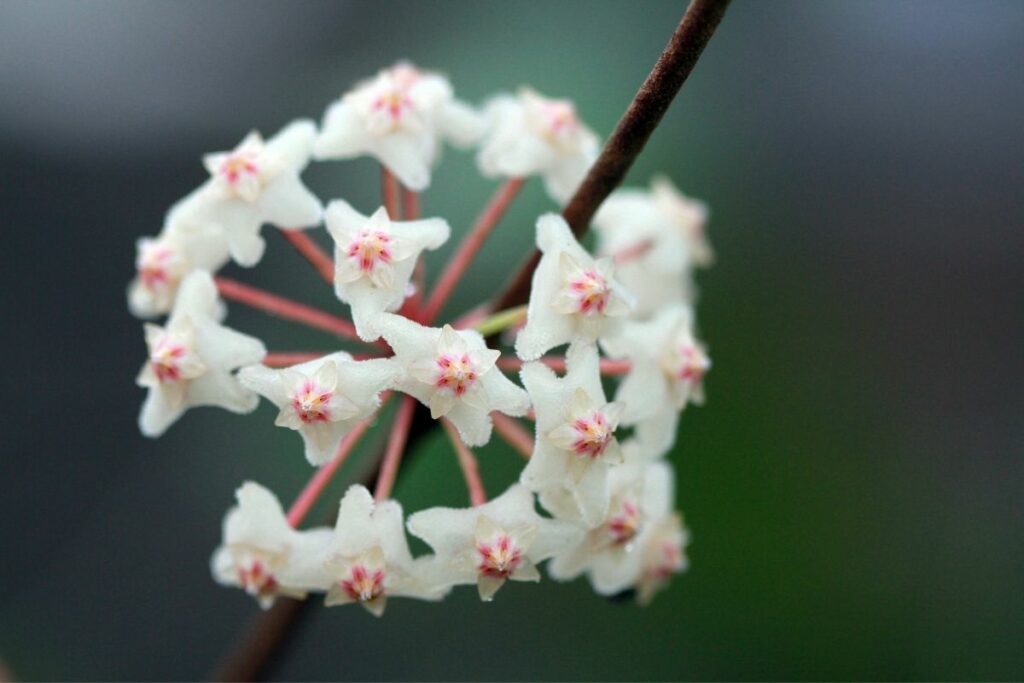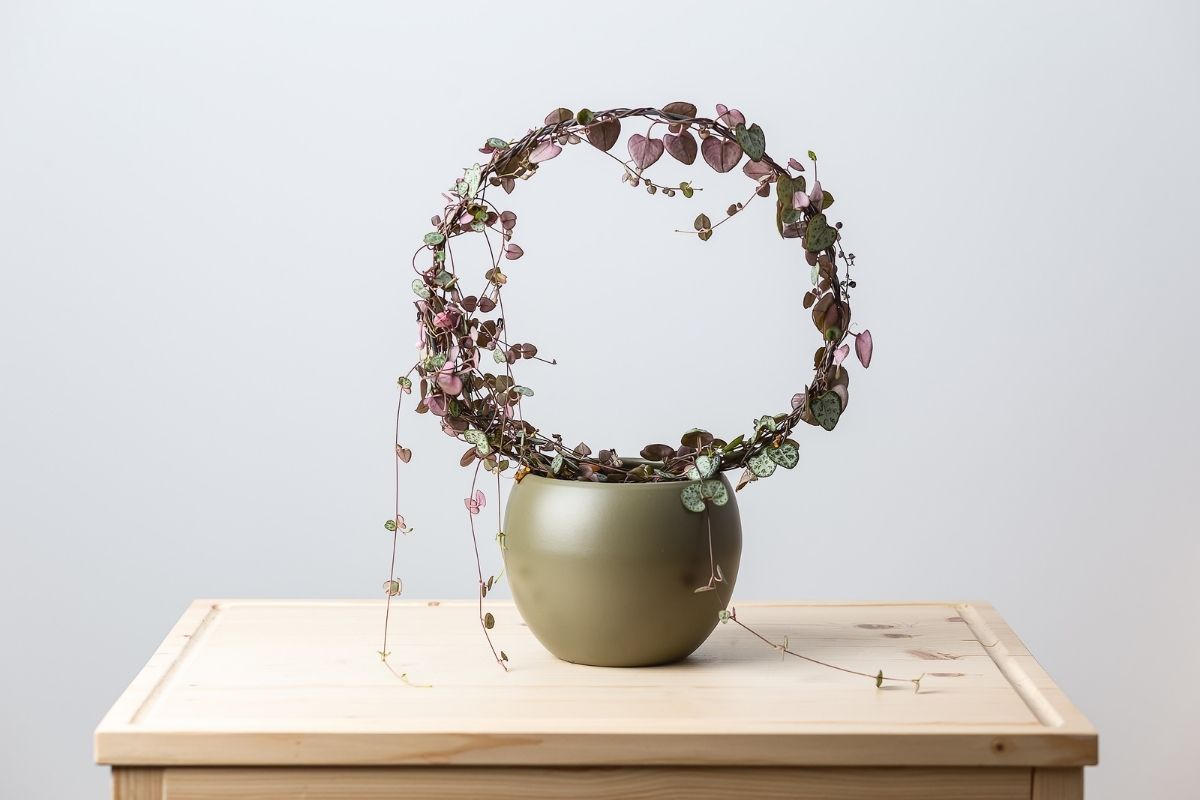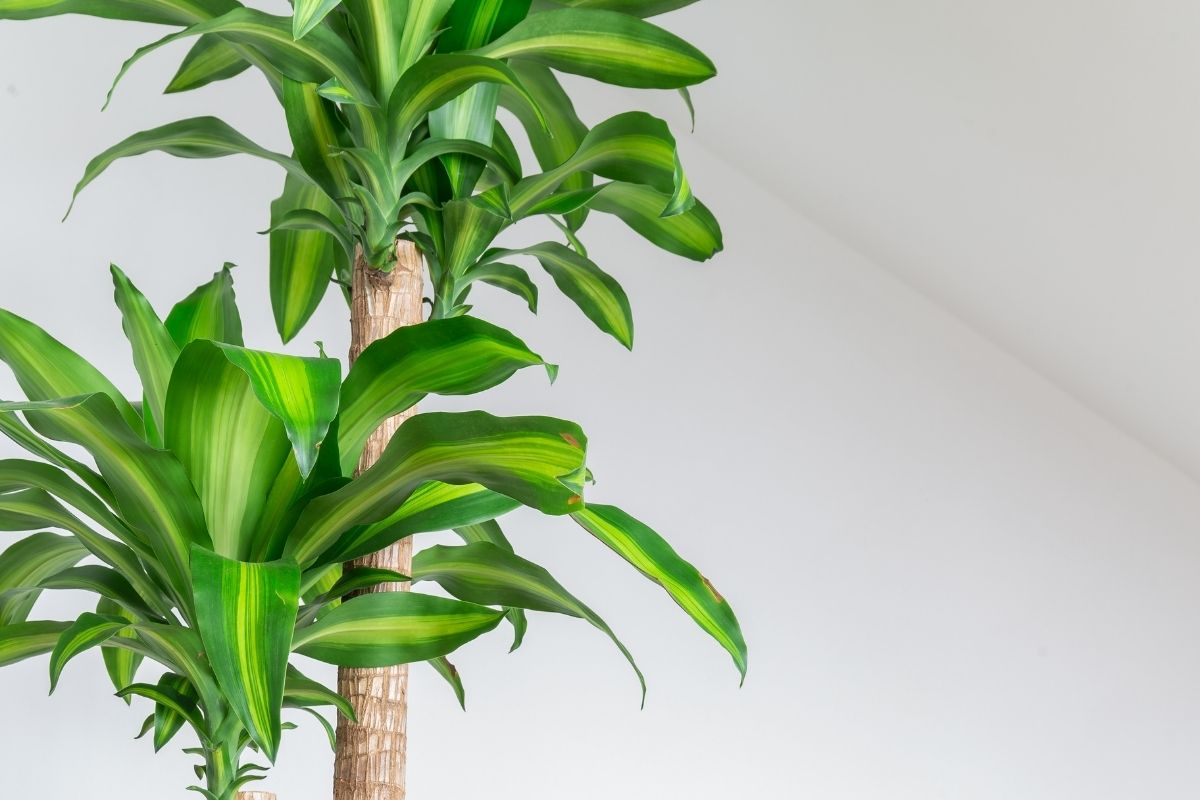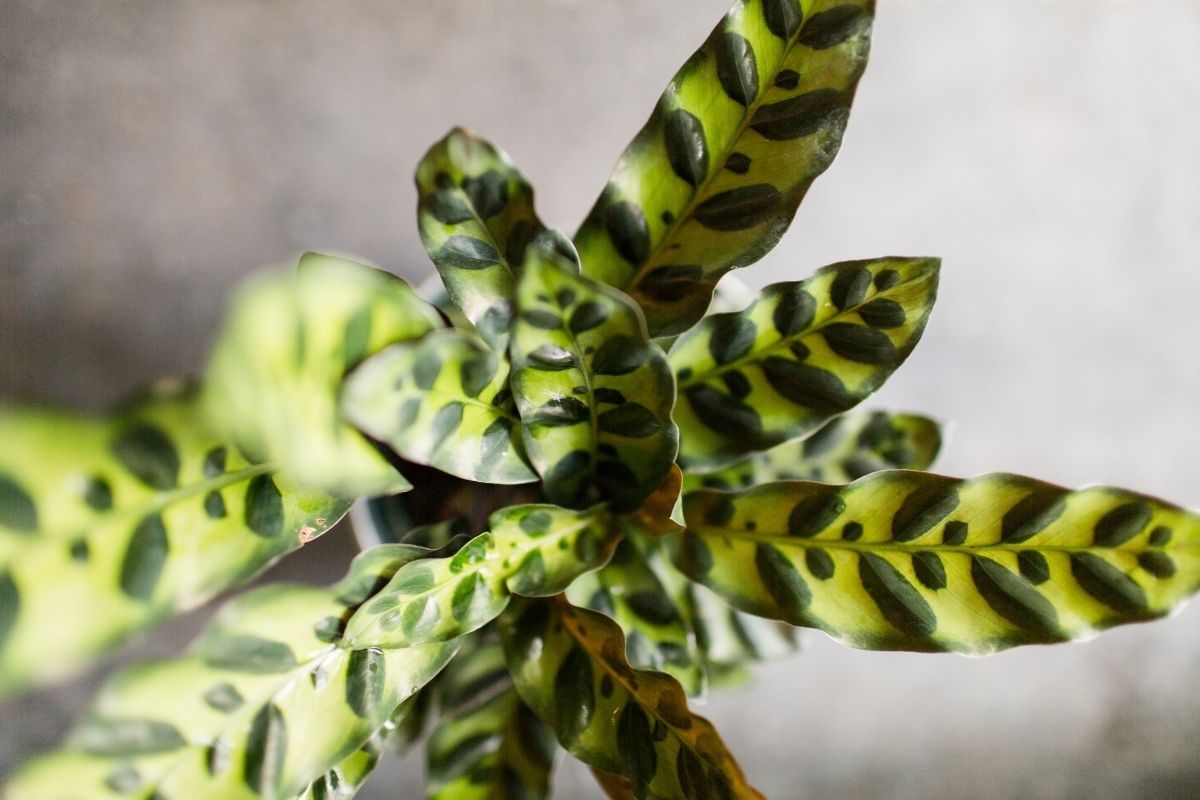The Hoya plant was discovered in the 18th century by a botanist named Robert Brown. He named the plant after his friend, Thomas Hoy, who was the gardener to the Duke of Northumberland. Ever since then, people have been going crazy about hoya plants, and they love having them as house plants. But, how do you take care of a Hoya plant?
To take good care of a Hoya plant, you have to properly water it, give it enough sunlight, and protect it from pests and diseases.

If you are a new proud owner of a Hoya plant but are unsure of how to take good care of it, keep reading to make sure your Hoya stays happy and healthy.
How do you take care of a Hoya?
Hoya plants are semi-low maintenance tropical plants, and they are sensitive to overwatering. In order for your hoya plant to thrive, you will have to change its care with every season.
It is more likely to flower if it were pot-bound and deprived of food during winter months, but make sure that it gets at least 2-4 hours of direct sunlight every day.
Install this houseplant in a hanging basket or train it to grow up a frame for a great addition to your home decor.
Hoya is a part of the Apocynaceae family which is native to Asia. There are a few species that also grow in Australia.
It is commonly called a “wax plant” or “waxflower”, because of its waxy leaves and flowers. Once the plant matures, the star-shaped cluster flowers will bloom.
Most hoya plants range in shades of whites, pinks, and reds. But, several varieties have orange or even green flowers. You’ll notice that this plant has a sweet scent when in bloom.
Hoyas mostly grow epiphytically on trees or terrestrially in soil or rocky areas in the wild. When growing in your home, it will work best in a hanging pot, but they can easily be trained to grow up a frame too.
It is believed that the more root-bound your Hoya is, the better chance you have of a flowering plant.
Starting out
Before you start planting your hoya plant, make sure you have aerated soil, perlite, a peat-based fertilizer, and gardening gloves. If filtered water is not available to you, leave some water for 24-48 hours, and then use it to plant your hoya.
Don’t plant it in a too big pot, as it thrives when pot-bound. Choose a pot that is 1 or 2 sizes larger than the pot you bought it in to encourage bloom.
The roots of hoya plants are very sensitive, so it’s important to be gentle when transferring your starter plant into a new pot. Turn the plant at a 45-degree angle and gently pull the plant by its base with your gloved hand.
Next, place your hoya in the new pot, layer with a soil and perlite mixture leaving 1-2 inches for the fertilizer. Make sure you do not touch the plants with your bare hands because it can damage the spurs of the plant. Cover the top of the plant with fertilizer and place your new plant in an east or west-facing window.
Lastly, water the plant until the water seeps through and begins to drain. By doing this, you will help settle the soil and give your plant a good start to its new life.
Soil
Hoya plants are epiphytic which means that they don’t require the traditional, heavier soil. A perfect blend to grow your hoya plant in is made out of pine bark, perlite, and peat moss. One soil mix that is very popular is made out of one part pine bark to two parts peat moss, with a bit of dolomitic lime mixed in to reduce the acidity of the blend. Add some perlite to lighten it and increase its drainage capability.
You can also use commercial potting soil, but you will have to add extra perlite to the blend to lighten it up significantly. An orchid mix would be a good choice, as it tends to be light and extremely well-draining, as the plants require.
Fertilizer
Because the hoya plant is mostly a foliage plant, it requires a lot of nitrogen to spur its growth. New plants should be given a high nitrogen fertilizer on a regular basis. If you are fertilizing with a liquid, use a 2-1-2 or 3-1-2 once or twice a month to encourage growth.
When your plant reaches a good size, you will want to switch to a high phosphorus fertilizer to encourage blooming. Many people decide to use a fertilizer that is a 5-10-5, water-soluble fertilizer, but simply dilute it.
The different varieties of this plant will bloom at different times during the spring or summer. Switching to a high phosphorus fertilizer about a month prior to your plant’s blooming period can produce stunning flower growth.
You have to be cautious when using liquid fertilizers for the hoya plant. A liquid fertilizer that is too strong will burn the plant and cause damage. To make sure that your fertilizer is not too strong, dilute it with water. It is also better to put too little fertilizer than too much.
You don’t have to fertilize your plant during winter because it is dormant. If you still want to, use an extremely low fertilizer ratio, around a 2-1-2, and fertilize no more than once per month.
Repotting
Once you see roots appearing around drainage holes, it’s time to repot your hoya plant. If your plant is in a plastic pot, you can check if you should repot it by gently pressing against the pot’s sides. If it’s firm, it’s time to repot it.
It is best to repot your hoya plant during spring or early summer, as this is when it’s in its active growing stage. Choose a pot that is no larger than 1-2 inches wider and taller than your current one. Too much space can actually stunt your plant’s flowering ability and could pose a danger to its roots from excess moisture in the soil.
Make sure you don’t repot it any lower in the pot than it was in its earlier pot. Even though hoya plants can form roots along stems and from leaves, they also require some airflow around the plant to avoid plant damage like rot or decay.
Pruning
Hoya plant requires some light maintenance to keep it healthy and happy.
Start by removing any dead, wilted, and damaged branches and leaves. These will often have a brownish or yellowish color, which makes them easy to identify. Prune away any material which appears to be diseased. It can look chalky or dusty, and in glossy-leaved specimens can contribute to dull or matted-looking leaves.
Any other pruning than that is purely cosmetic, and you should be very careful with that. For hoya plants, new flower growth can occur on older flower stems called spurs. Those spurs will flower year after year. Avoid removing those to secure your plant can continue to flower.
It’s also not very wise to remove too much of the trailing length of your hoya plant, because those trailing arms are necessary. If the plant cannot grow in size, it won’t fill its pot and start producing those star-shaped flowers.
How much light and water?
Hoya plants like lots of bright, indirect sun. They are able to tolerate medium light, but they’ll become weaker, leggy, and produce fewer leaves in lower light. They can’t tolerate full sun conditions in the summer, as the summer sun can scorch the succulent-like leaves and cause color bleaching.
You should ensure your hoya plant has at least 6 hours of bright and indirect sunlight per day. A good option during summer is to use a growing light to supplement the sun’s rays.
Hoya plant, as a tropical plant, likes temperatures over 50 degrees Fahrenheit. Some varieties prefer it to be in the 60s or 70s. That temperature is perfect for Hoya plants that are grown indoors, as the temperature in most homes is around 60-70 degrees.
If you are growing your Hoya plant outside, make sure to bring it indoors as soon as the temperature is too low for it to survive.
Some Hoya plants prefer to stay below 80 degrees, but some can survive the temperature of up to to 95 or even higher. Make sure they are protected from the heat during the hottest part of the day and add some shade to keep the plants from wilting in direct sunlight.
Hoya plants live in low-water environments. Make sure to let your Hoya plant dry out between waterings. Soak the soil thoroughly until the water drains out of the drainage holes. When the Hoya plant receives more light, it needs more water. Avoid over-watering, as they will suffer ill effects including root rot if kept in soggy conditions. Once the colder weather comes, cut back on watering, and only water when the soil is dry.
The plant needs the most water during spring and summer. During those times, the plant is going through its major growth for the year and will need that water to expand and bloom. If the soil is dry in the top inch or two, water to moisten the soil but do not flood the pot or allow water to pool.
How are you cutting it in order to make more small plants of it?
Hoya plants are very beautiful but very expensive. That’s why it’s better to propagate it when you want more hoya plants than to buy another one.
Start by taking a cutting from a healthy plant during the spring or summer. These seasons are the best for propagating hoyas, as it’s their growing season so they’ll develop roots and grow faster than during winter when they’re sleeping.
Make sure that the cutting is about 4 inches long, and that it has between 2 and 6 leaves. You should also make sure the cutting has quite a long stem, to anchor it into the pot.
You can encourage the cutting to develop roots in two ways. The first one is to place it in a glass of water and wait until the plant develops roots that are about 3.5- 4 inches long.
Or, you can place the cutting in a small pot with a propagation mix made out of 3 parts perlite, 3 parts coco-peat, and 1 part vermiculite.
You’ll be able to see when the plant develops roots. Once that happens, fill a small pot with an orchid mix.
Next, plant the cutting in the pot, and make sure there’s enough stem underneath the surface of the mix to anchor the plant into the pot.
It will take your plant about 2 years to grow out of this pot.
What are the most common problems with the hoya plant?
There are some issues that can occur with your hoya plant, like for example, growing problems.
Problems with growing
Most growing problems are related to watering issues. It’s very easy to overwater your hoya plant. That can cause root rot and kill your plant. However, underwatering can cause wilting and yellowing of leaves.
Pest infestations
Some of the most common pests that will attack your hoya plant are aphids, mealybugs, spider mites, and other scale insects. You can control all these pests with the use of neem oil. To get rid of these pests, spray neem oil on all surfaces of the plant, and it should reduce or remove them entirely.
Whiteflies and thrips are also very problematic if they’re in high population numbers in your yard already. Some forms of caterpillars will also eat your hoya plant.
To get rid of whiteflies and thrips, try using insecticidal soaps.
Snails and slugs will also attack your hoya plant. To keep them away, get some snail and slug baits, or fill a bowl with beer. They are attracted by the beer and once they get in the bowl, they will most likely drown. If they don’t drown, they will fall asleep and then you can let them out somewhere, or throw them away.
Diseases
One of the most common diseases amongst hoya growers is sooty mold. That is a black mold that forms on leaves that are sticky with plant saps or nectars, and the hoya flowers can produce enough sweet-smelling nectar to cause it. Aphids are also able to cause sooty mold due to their production of honeydew.
If your hoya plant has sooty mold, don’t worry because it is very easy to deal with. Just wipe off the mold with a damp cloth. If you want to, you can spray a diluted seaweed fertilizer over the area where the mold developed, which seems to stave off mold formation for a while.
Another disease that the hoya plant can develop is botrytis blight. The disease starts as greyish fungal patches towards the center of the plant. While it develops, it can cause leaves to become mushy or to collapse. It can be treated with the use of a copper fungicide.
Finally, your hoya plant can suffer from root rot. It is caused by moisture in the soil which aids fungal development. It can be prevented by not overwatering. Some symptoms of root rot are that your plant begins to wilt or form black or brown stem or leaf lesions.
To try to reduce the effects of root rot, spray both the soil and the plant with a copper fungicide. If the roots themselves are black and mushy, your plant is beyond repair and should be disposed of.
Why are the plants so expensive?
Hoya was a classic houseplant in the 1970s, but it made a huge comeback. Hoyas are now available once again at specialty garden centers and house plant shops. There are also many varieties to choose from.
Indoor plants became a huge decor trend, fuelled in part by Instagram and Hoya has all the attention now.
Most people like Hoya plants because of their looks. They mostly have clusters of star-shaped flowers in shades of white, pink, and red. The waxy petals have a porcelain-like appearance and emit fragrance.
Hoya’s scents vary in strength. They have a reputation of having extremely strong-smelling blooms because Hoya carnosa‘s blooms are very aromatic and potent. Still, the smell and strength of their blooms are as diverse as their foliage.
Some of them can even smell like chocolate, vanilla, cinnamon, or just floral.
A lot of people like them because they are low-maintenance, pet-friendly, and very easy to grow. They are also trailing plants, so they can be suspended, making them ideal for small spaces and apartments because they take up less room.
A few months ago, one Hoya plant was sold for 6500 dollars. Hoya is considered to be one of the more expensive plants. Why is that?
Some gardening experts compare the high prices of Hoyas to the high prices of clothes.
They believe that the prices are so high just for the purpose of showing off. The color makes the plants look different therefore they are seen as special or unique.
But another thing that could be the reason for the high price is how hard it is to propagate this plant and how slowly it grows.
Since Hoyas are usually sold as a single heart-shaped leaf in a pot, it takes a lot of years to get going. Some of the Hoyas that are on sale could be 10, 15, 20 years old, or even older. There is a lot of maintenance and costs over the years for a commercial grower.
It also makes sense to pay a higher price for a plant that is not only pretty but very durable and won’t die easily.
What are the most exclusive ones?
The family of Hoya consists of about 200-300 different species with multiple different cultivars. Some of them have beautiful aromatic flowers, and others are vines with a wide diversity of leaf shapes.
Hoya carnosa
Hoya carnosa is also known as the Wax plant, Porcelain Flower, Wax Flower plant, and Hindu Rope Plant. This sweet-smelling species of the Hoya plant is one of the most popular of the hoya plant varieties, with many different cultivars available. It has won the Royal Horticultural Society’s Award of Garden Merit for many of those cultivars and is a phenomenal houseplant.
It originated in eastern Asia and Australia. It has waxy foliage and star-shaped flowers common to all hoya varieties. It tends to grow as a vining plant. It is also a very popular plant to grow because it is believed that it is a great cleanser of indoor air pollutants.
Hoya australis
Hoya australis is also called Common Waxflower and Waxvine. It has shiny, succulent leaves and a vining habit. It is a common butterfly attractant in its native Australia. Hoya australis loves sunlight, growing along the edges of rainforests and on rocky outcroppings in the eastern and southern parts of its native ground.
It is often grown as a houseplant in Australia, and it is slowly starting to make an appearance in other areas of the world as well. It can be grown indoors or outdoors in full sun conditions.
Hoya cinnamomifolia
Hoya cinnamomifolia is also known as the Wax plant. It originated on the island of Java. Hoya cinnamomifolia got its name from the shape of its leaves because they resemble those of the Ceylon cinnamon or “true cinnamon” plant in shape and size.
This Hoya plant is not often grown in gardens, but it is notable because of its distinctive flowers, which have outer petals in green to yellow tones. The inner petals are rich and have a bright pinkish-red to dark red color.
Hoya kerii
Hoya kerii is also called Lucky-heart and Sweetheart Plant due to the shape of its leaves. It originated in southeastern Asia. It’s a very popular house plant in that area and also in Europe, where it’s sold for Valentine’s Day.
Hoya plant is sold as a single heart-shaped leaf in a pot when bought in a garden center. It can take a couple of years before Hoya kerri starts to grow in size, but when it does, it rapidly forms a vining habit and spreads out quickly. Its flowers are pinkish to yellowish with a deeper pink center star.
Hoya serpens
Hoya serpens, or Green Wax Plant, is found in the Himalayas. This green wax plant is a rapid-growing vine. Its flowers have a greenish color and they appear to be furry or fuzzy. The only light spot in these flowers comes from a tiny bit of yellow at the center flanked with hints of a deep pink shade. Otherwise, the rest of the flower tends to have a cream to pale green color. It commonly has round and waxy-looking leaves and the pale green flowers are less common.
Source
- https://www.joyusgarden.com/how-to-care-for-a-hoya-houseplant/
- https://homesteadbrooklyn.com/all/2019/4/8/the-ultimate-hoya-care-guide
- https://www.stamenandstemblog.com/blog/2018/9/15/hoya-plant-faqs
- https://planterina.com/blogs/plant-care/hoya-care
- https://www.espoma.com/gardening/indoor-gardening/hoya-plants-caring-for-hoya/
Related posts
-
How To Propagate String Of Hearts

The beautiful String of Hearts plant, native to South Africa and Zimbabwe, has captured the attention of America and dug its roots straight into our hearts. It loves humidity but can still thrive in drier climates. Many collectors have at least one String of Hearts plant. Its dark green heart-shaped leaves and silver or pink…
-
Mass cane plant care

Mass cane plants, grown as decorative plants are renowned for a wide range of advantages. Mass cane plant species, known as corn plant can be widely seen in European and American countries. Even though originated as an African plant, you can see the mass cane plant in countries with low-temperature. How to cultivate mass cane…
-
Rattlesnake Plant Care: Taking Care of Calatheas

Rattlesnake plants, Calathea lancifolia, are native to the tropical forests of Central and South America. It is also called the zebra plant because its leaves have white stripes on a dark green background. The flowers are purple with yellowish anthers. Despite their common names, these plants actually belong to the Marantaceae family. Rattlesnake plants need…
